Cat bridges are more than playful add-ons—they’re functional, enriching structures that let indoor cats express natural behaviors like climbing, balancing, and surveying their territory. Whether you’re aiming for a minimal wall-mounted layout or a ceiling-high jungle gym, cat bridges can add vertical interest to your space while significantly enhancing your cat’s quality of life.
This guide explores over 20 cat bridge ideas suitable for modern homes, DIY projects, and apartment-friendly setups. You’ll also find guidance on placement, safety, and design considerations to help you turn your walls into a feline paradise.
Why Cat Bridges Are Good for Cats
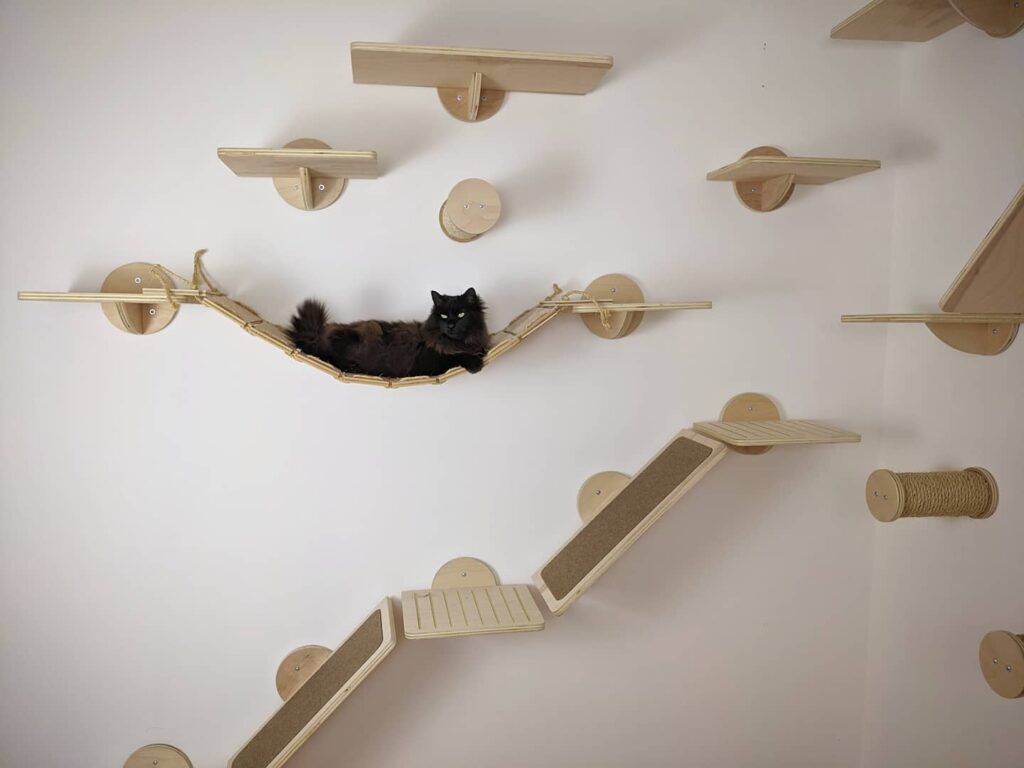
Vertical space matters to cats. In the wild, cats often seek high ground for observation, safety, and relaxation. Indoor cats retain this instinct, and cat bridges provide a secure, stimulating way to satisfy it.
Bridges can reduce stress in multi-cat households, offer physical activity without taking up floor space, and prevent boredom-related behaviors like scratching furniture or overeating.
Wall-Mounted Cat Bridge Ideas
Floating Wood Plank Bridges
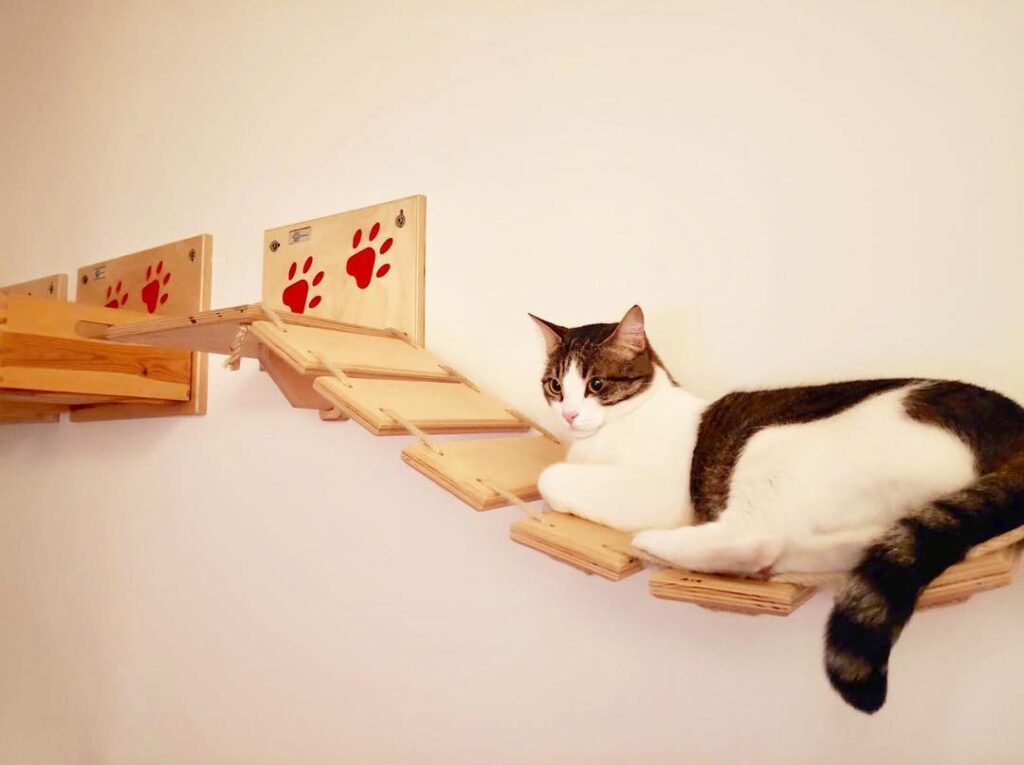
Simple wooden planks with rope or fabric handrails mounted between wall anchors. Ideal for minimalist interiors and cats that love walking narrow paths.
Curved or Arched Bridges
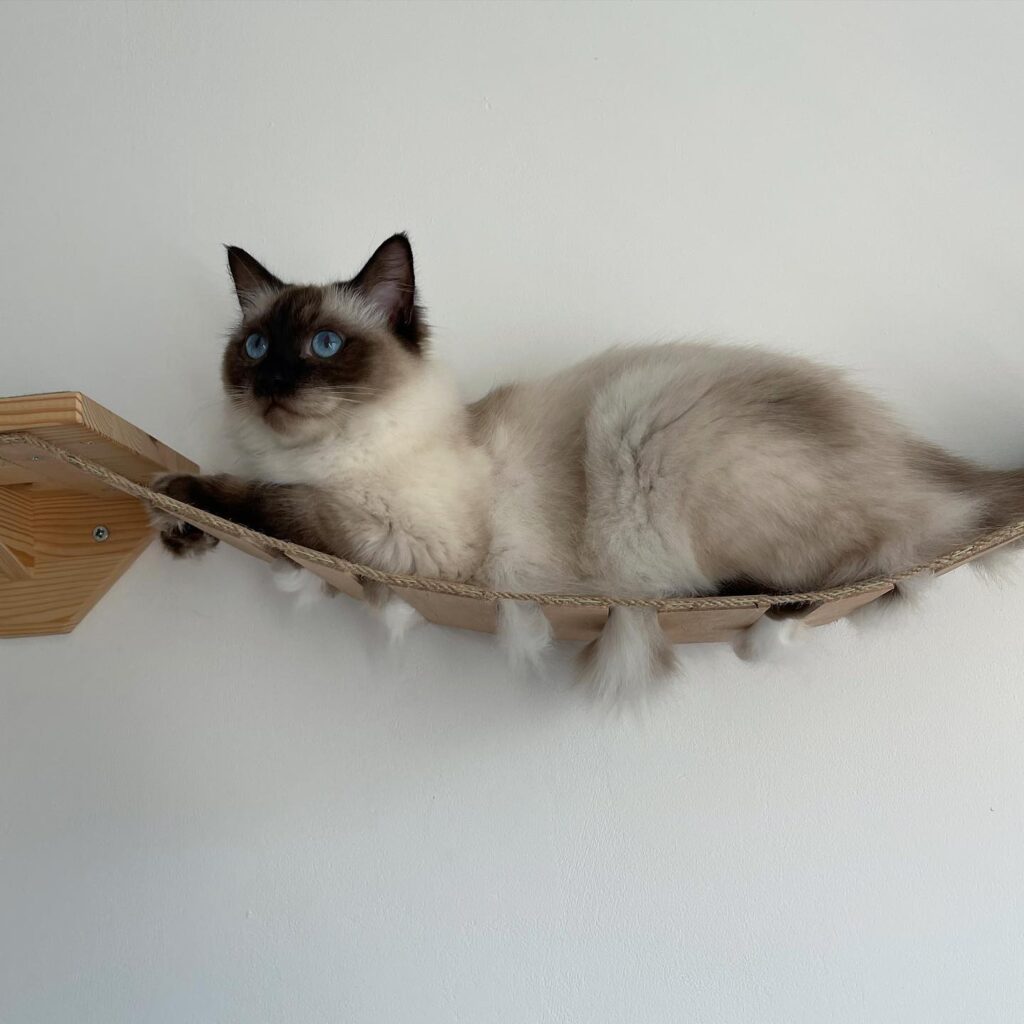
Gently arched wood or composite bridges allow a bit of sway for play. These are especially engaging for curious or athletic cats.
Shelf-to-Shelf Connectors

Bridge segments that link two or more floating shelves. This creates an extended wall system that can be rearranged and expanded over time.
Fabric Sling Bridges

Made with durable canvas or denim slung between wood or metal supports. These add a soft, hammock-like feel while still serving as connectors between platforms.
Rope Suspension Bridges
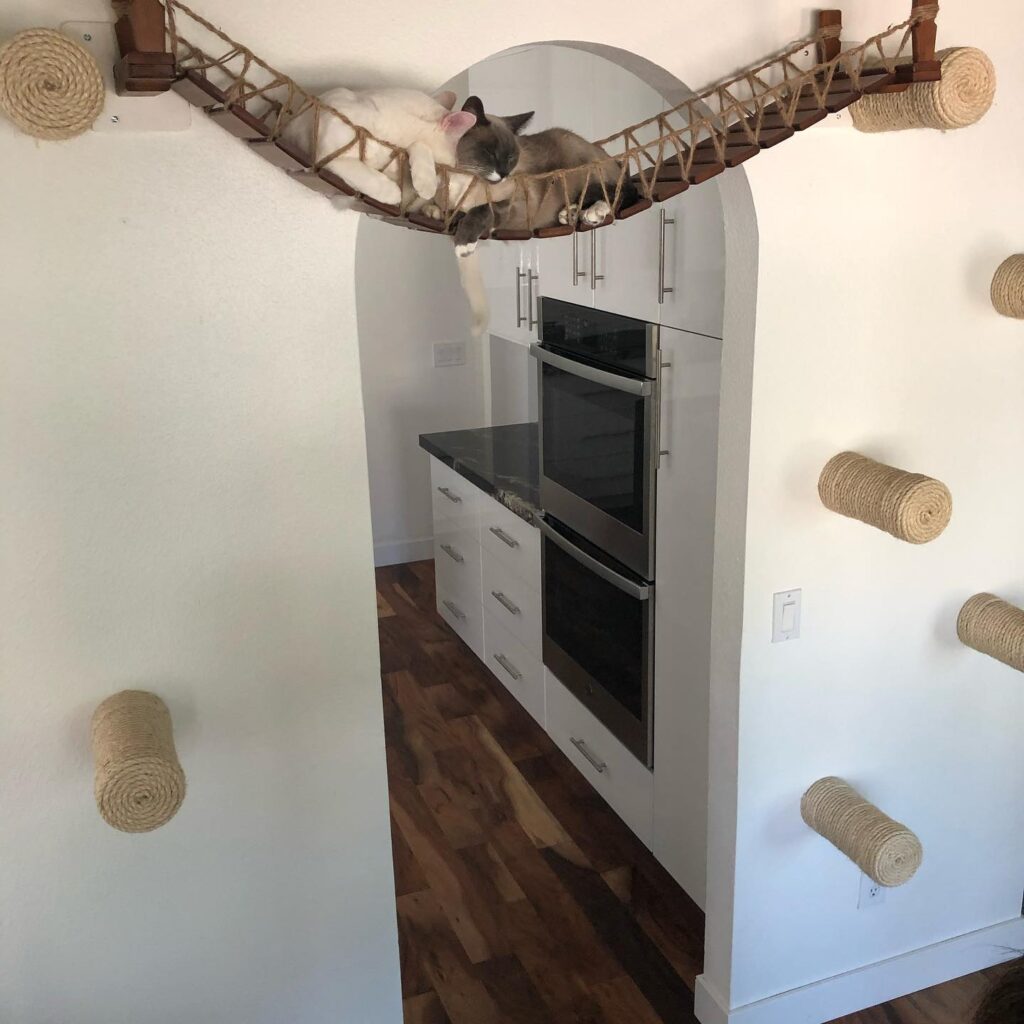
Thick ropes woven into a bridge with spaced slats or mesh panels. Visually striking and playful—great for bold cats and modern interiors.
Ceiling-Hung Cat Bridge Ideas
Suspended Rope Bridges
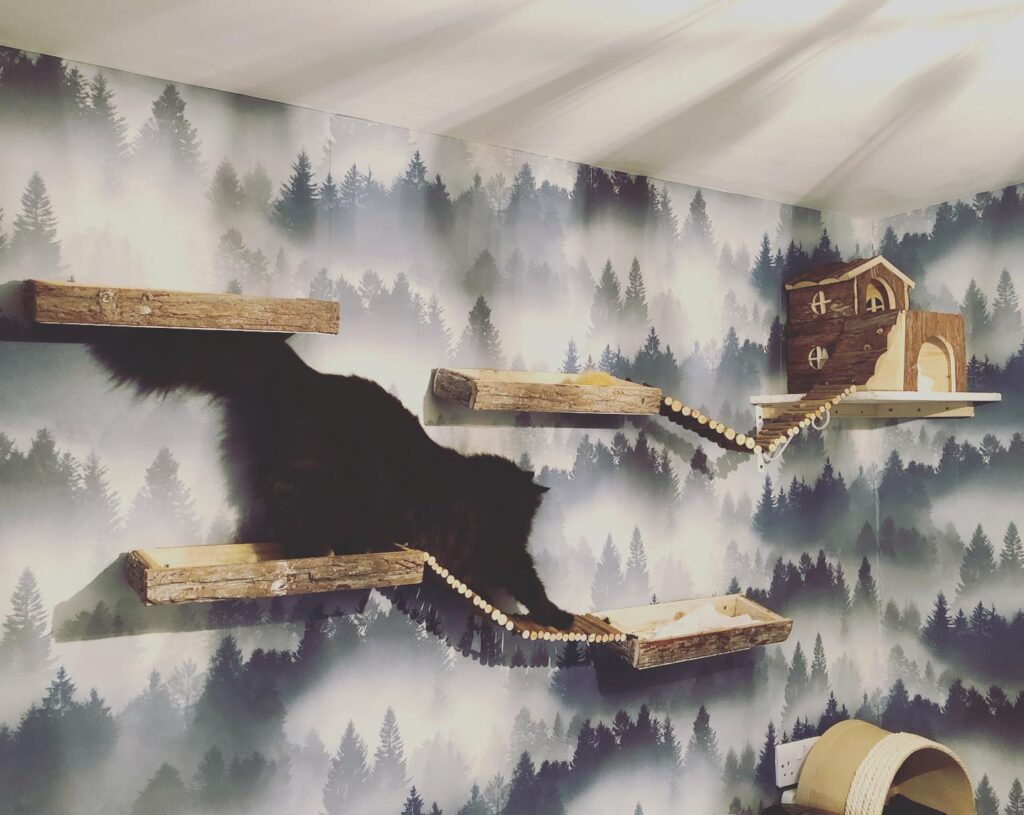
Ropes or wood-plank bridges hung from ceiling mounts give your cat a way to move across a room without touching the floor. These are most effective in lofts or open-plan living areas.
Ladder-Style Hanging Bridges
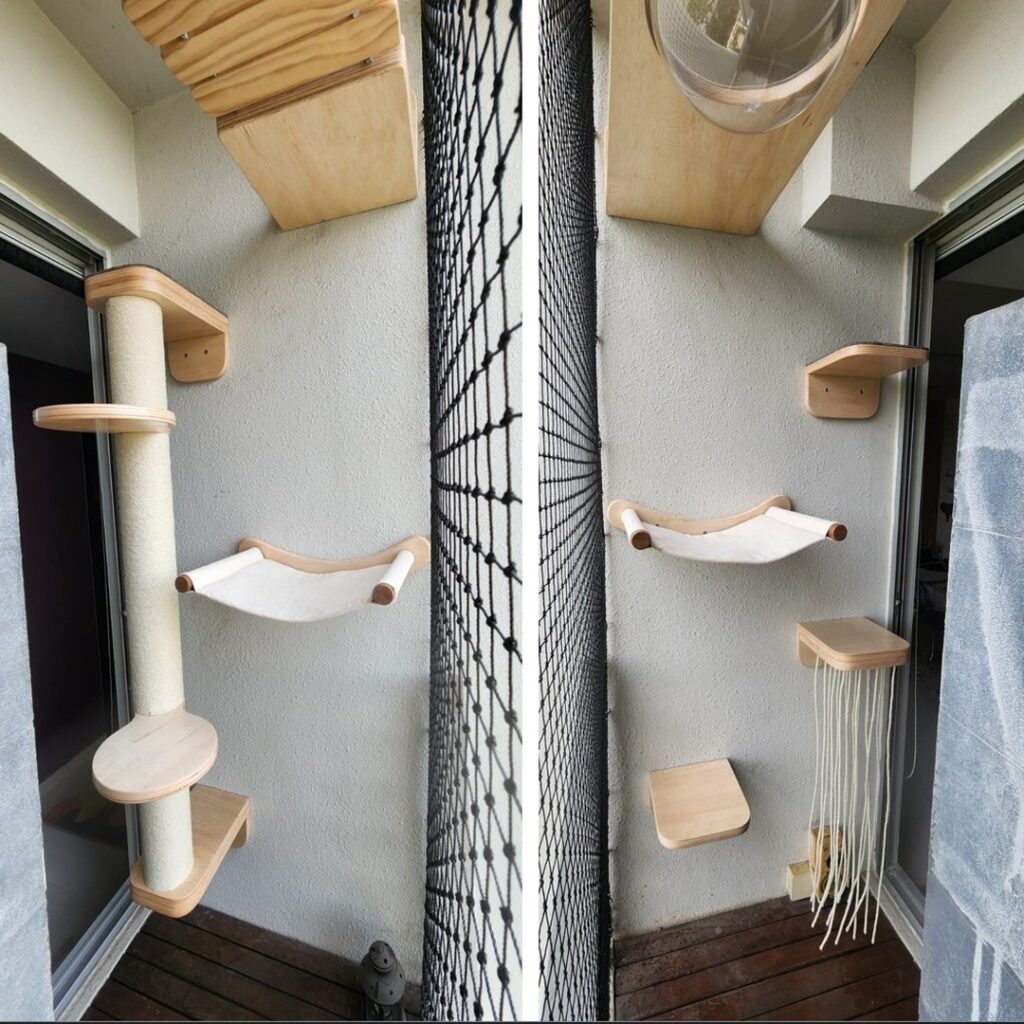
Resembling mini suspension bridges, these often connect high shelves or ceiling hammocks. Best for active cats and multi-level play setups.
Pulley or Modular Hanging Systems

Adjustable-height bridges or walkways using pulleys or clips. These are less common but ideal for flexible layouts or renters.
DIY Cat Bridge Concepts
Reclaimed Wood Walkways
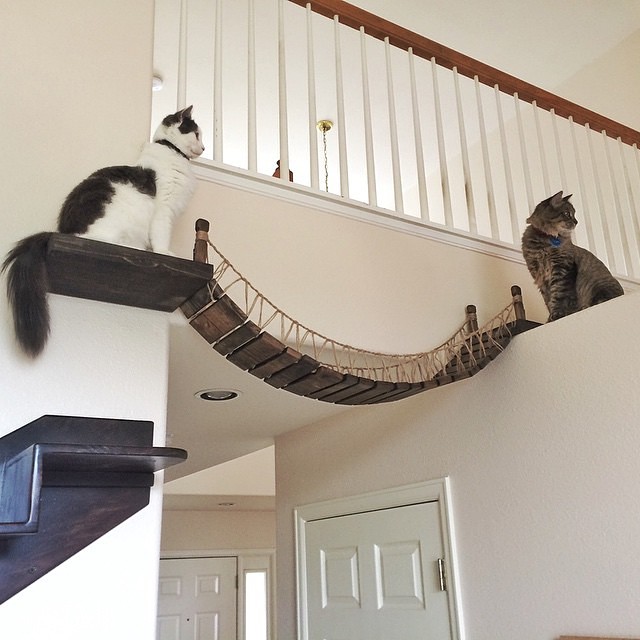
Use old fencing boards or pallet wood to create rustic-style bridges. Add jute rope or sisal for grip and texture.
IKEA Hack Bridges
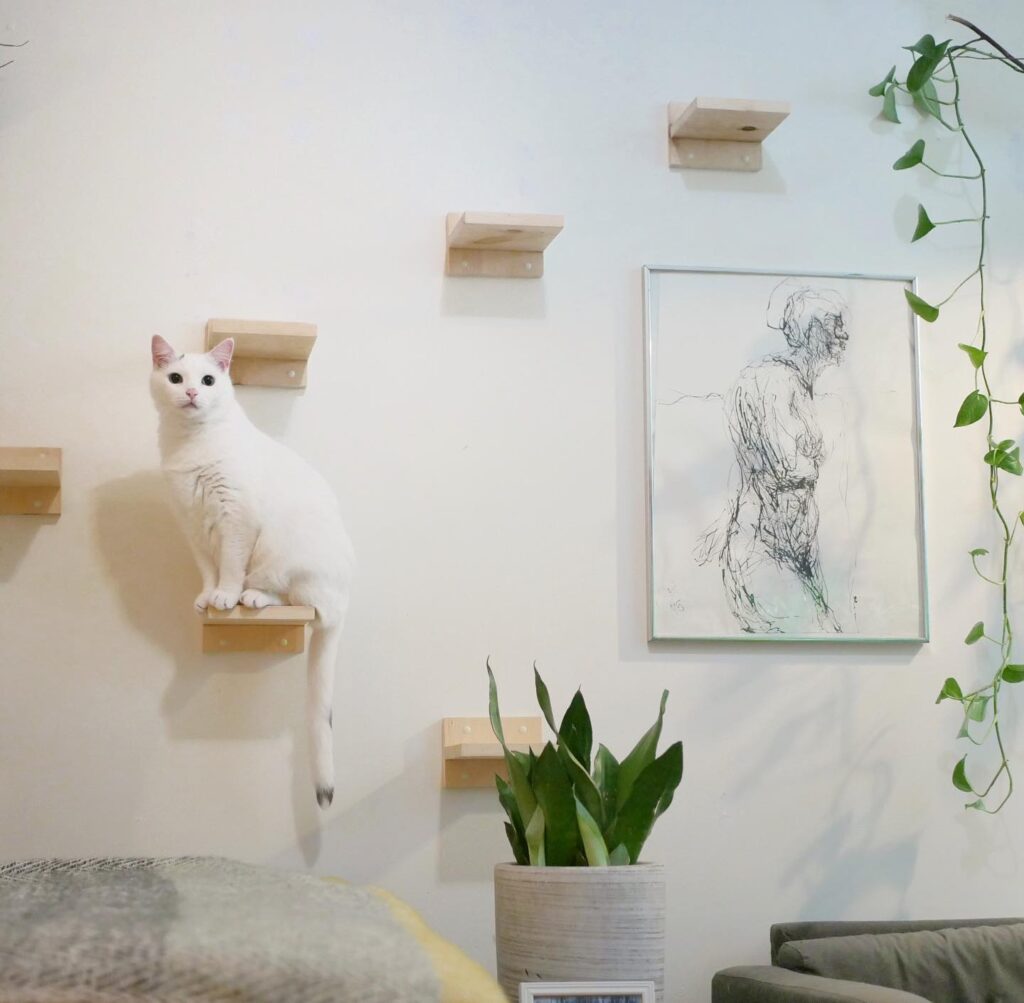
Repurpose IKEA spice racks, shelf brackets, or wall organizers as parts of a custom bridge system. Inexpensive and clean-looking.
Carpeted Plank Bridges
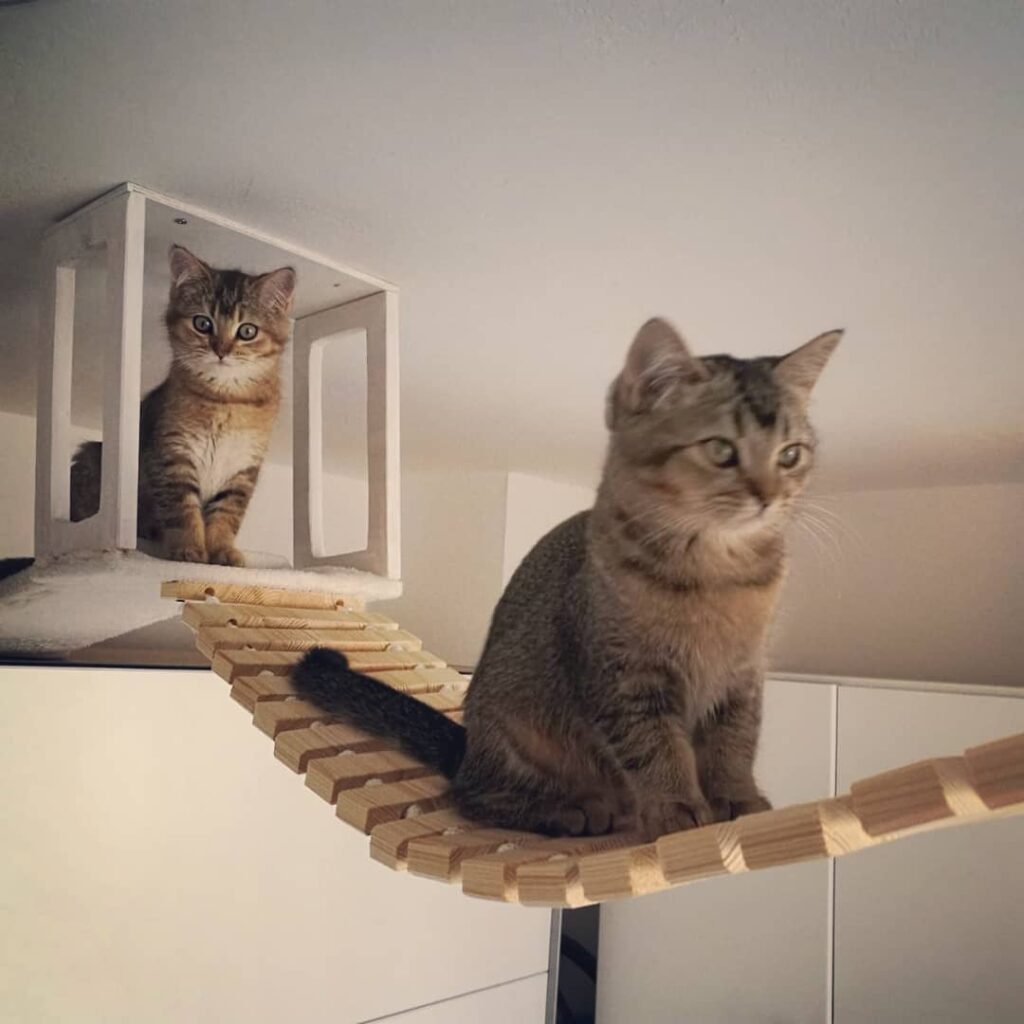
Cover a wooden board with low-pile carpet or sisal for extra grip. Works well for older cats or those with mobility issues.
Furniture-Integrated Cat Bridge Ideas
Bridge from Shelf to Cat Tree

Create a connection between your existing cat tree and a wall shelf to expand your cat’s play area vertically.
Bookshelf to Cat Condo Connector
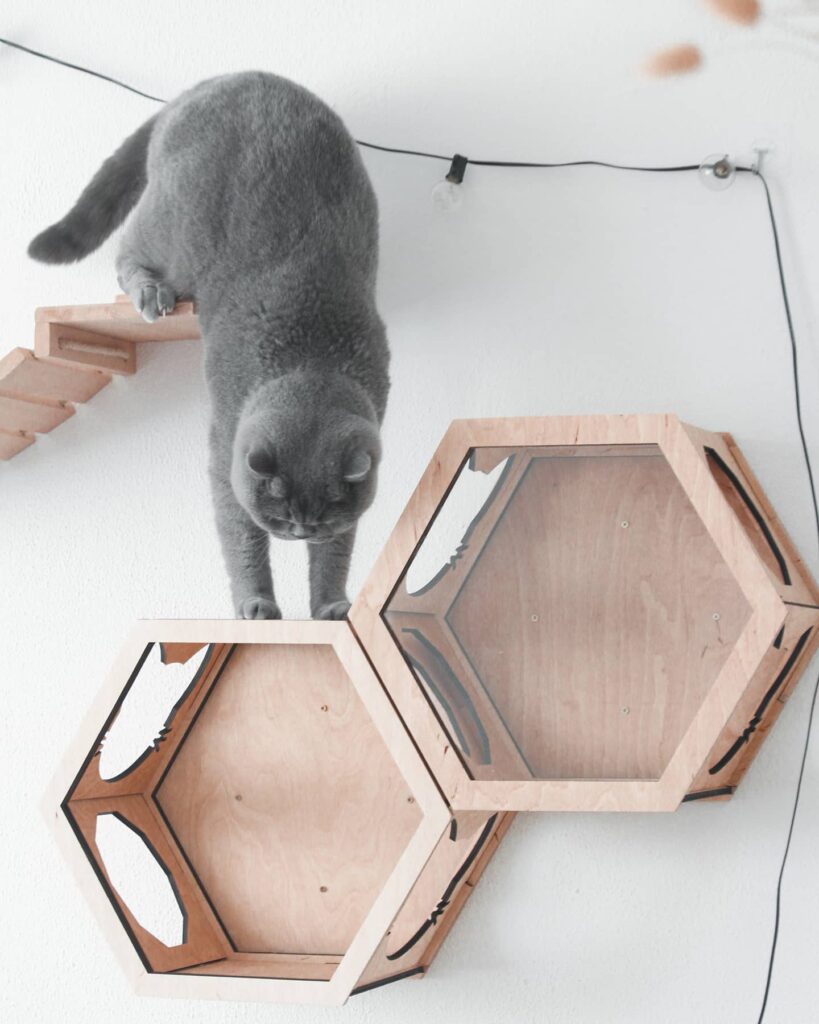
Attach a bridge from the top of a bookshelf to a cat condo or cube unit. This maximizes space in small apartments and gives your cat new routes to explore.
Couch-Top Bridge to Window Perch
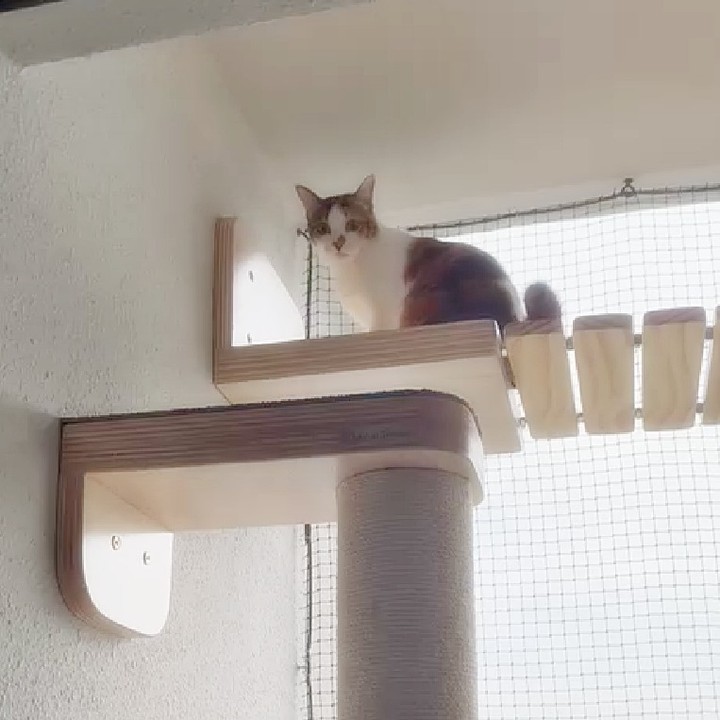
For window-loving cats, a bridge that connects a couch arm or backrest to a window hammock creates a cozy, elevated pathway.
Placement and Safety Tips
Height
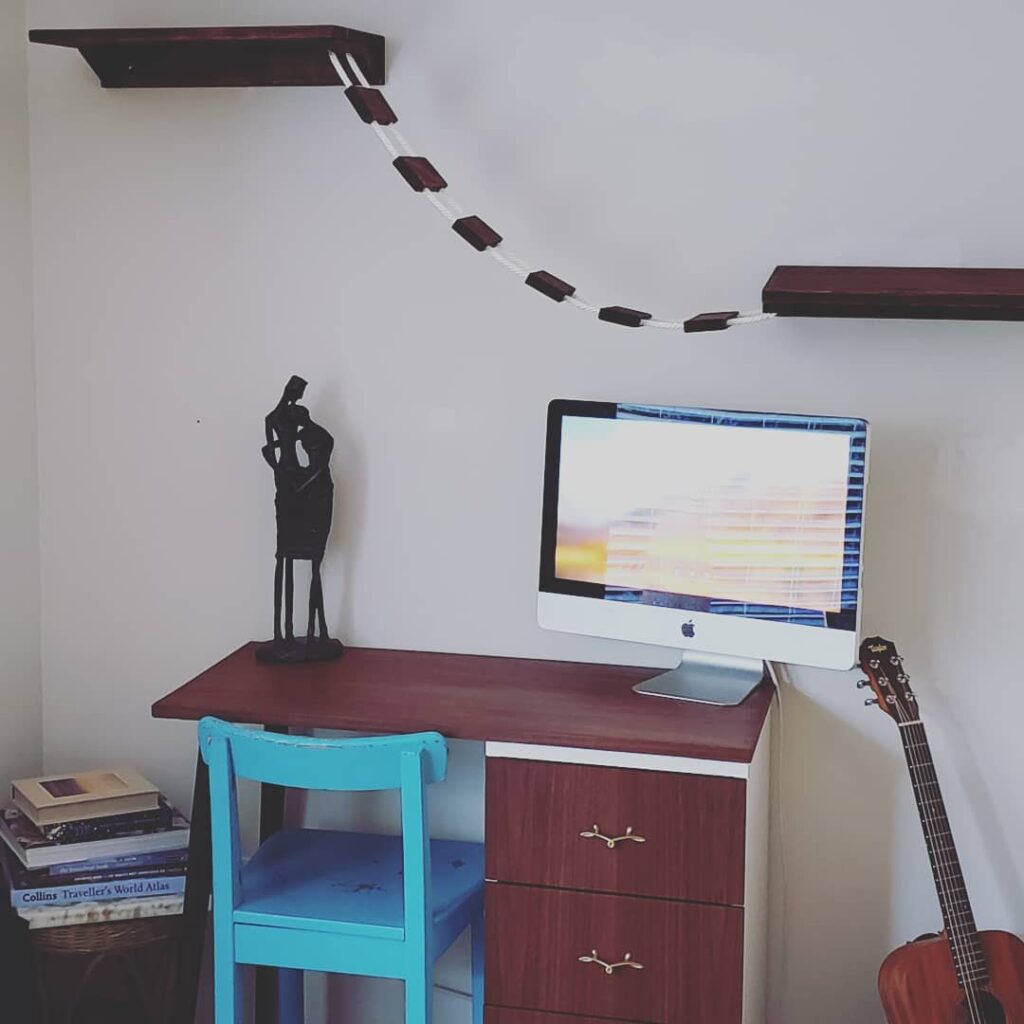
Start with bridges around 3–4 feet high for beginner setups. If your cat is agile, you can go much higher, but provide multiple access points.
Anchoring
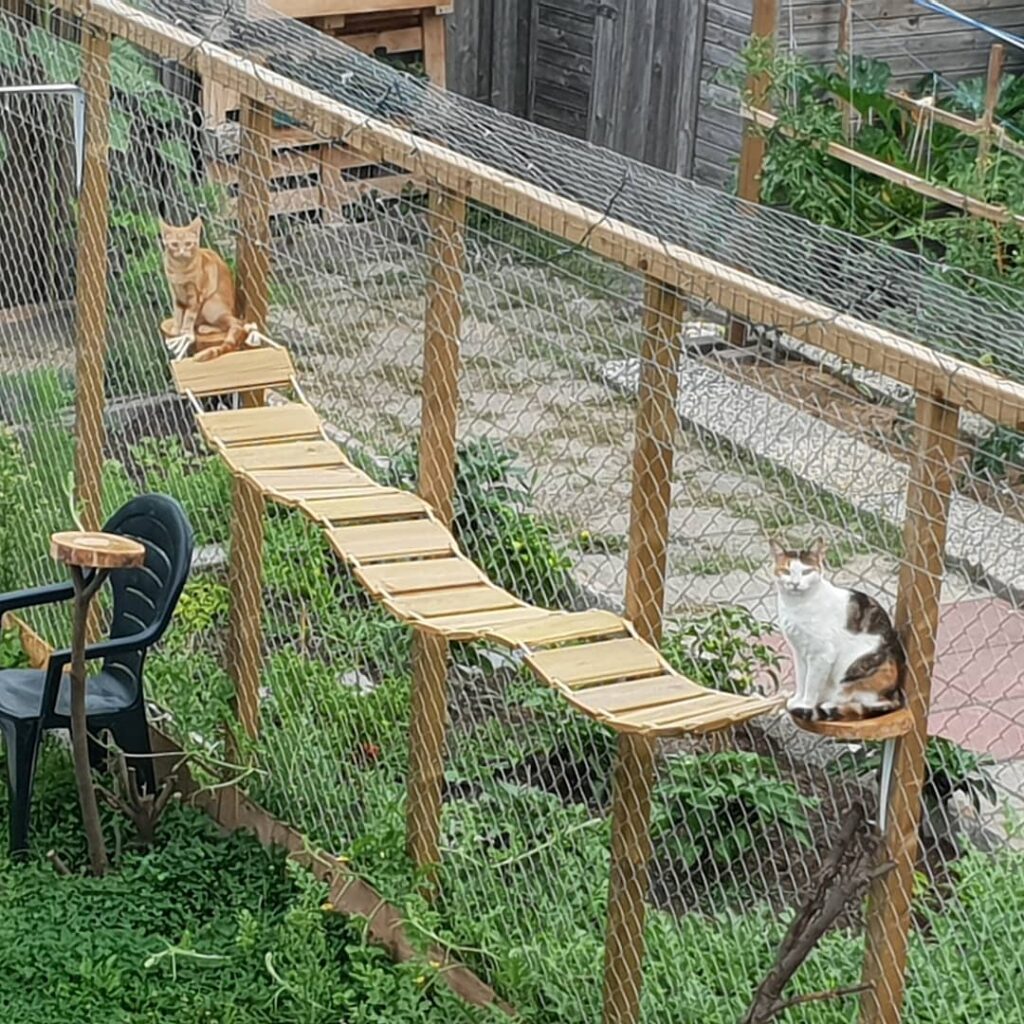
Always use heavy-duty wall anchors or brackets, especially for wooden bridges. Check for weight ratings and test before allowing use.
Spacing

Keep segments no more than a foot apart unless your cat is particularly athletic. Add intermediate platforms to help with transitions.
Materials
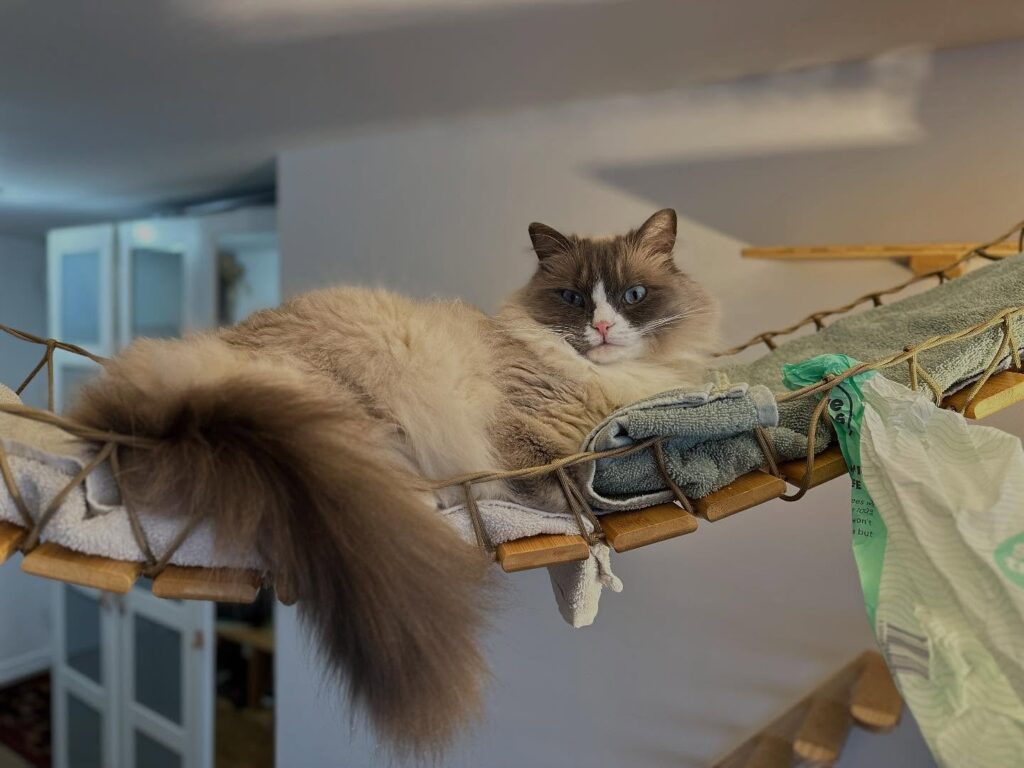
Use non-toxic finishes and sturdy materials. If adding grip, avoid anything too abrasive—opt for soft rope or carpet remnants.
Integration
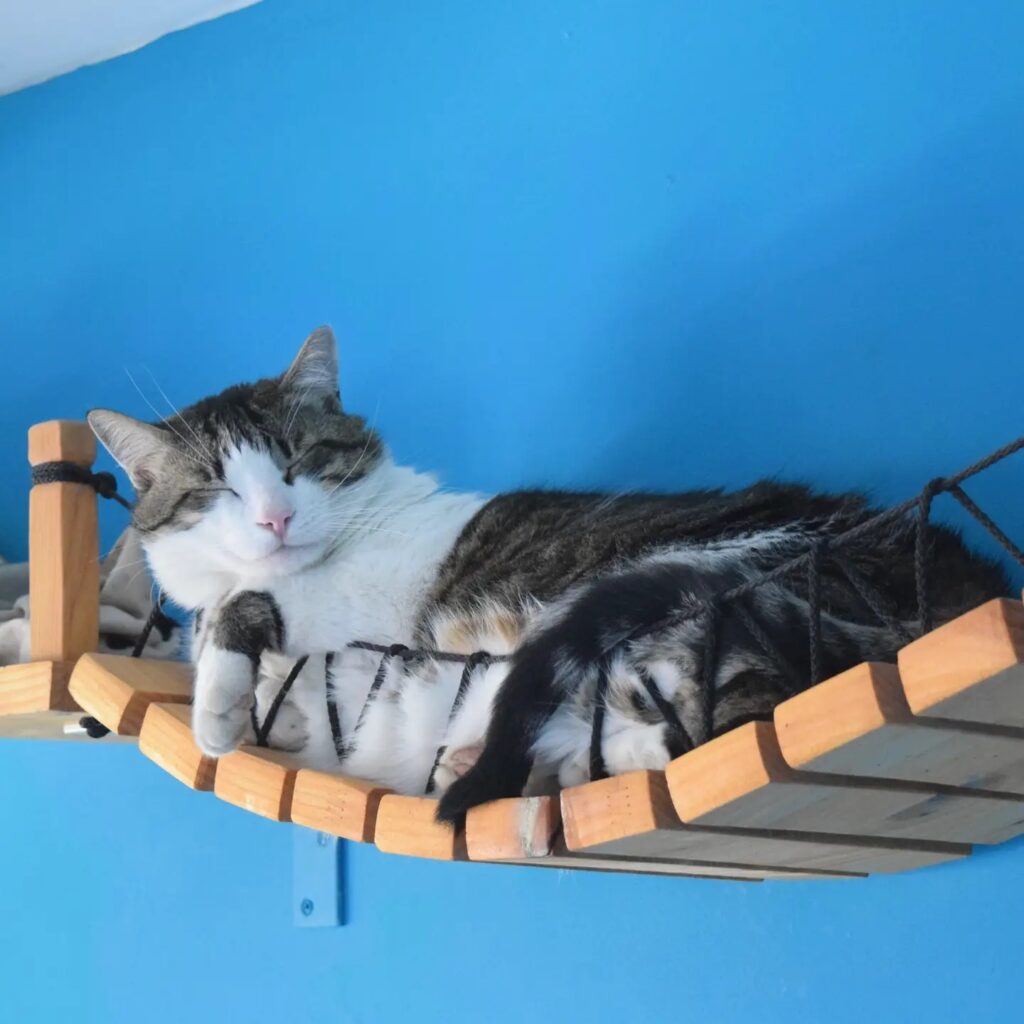
Place bridges near windows, wall hammocks, or feeding areas to create interest and encourage use. Avoid installing over breakable items or furniture.
Design Styles That Work with Cat Bridges
Minimalist
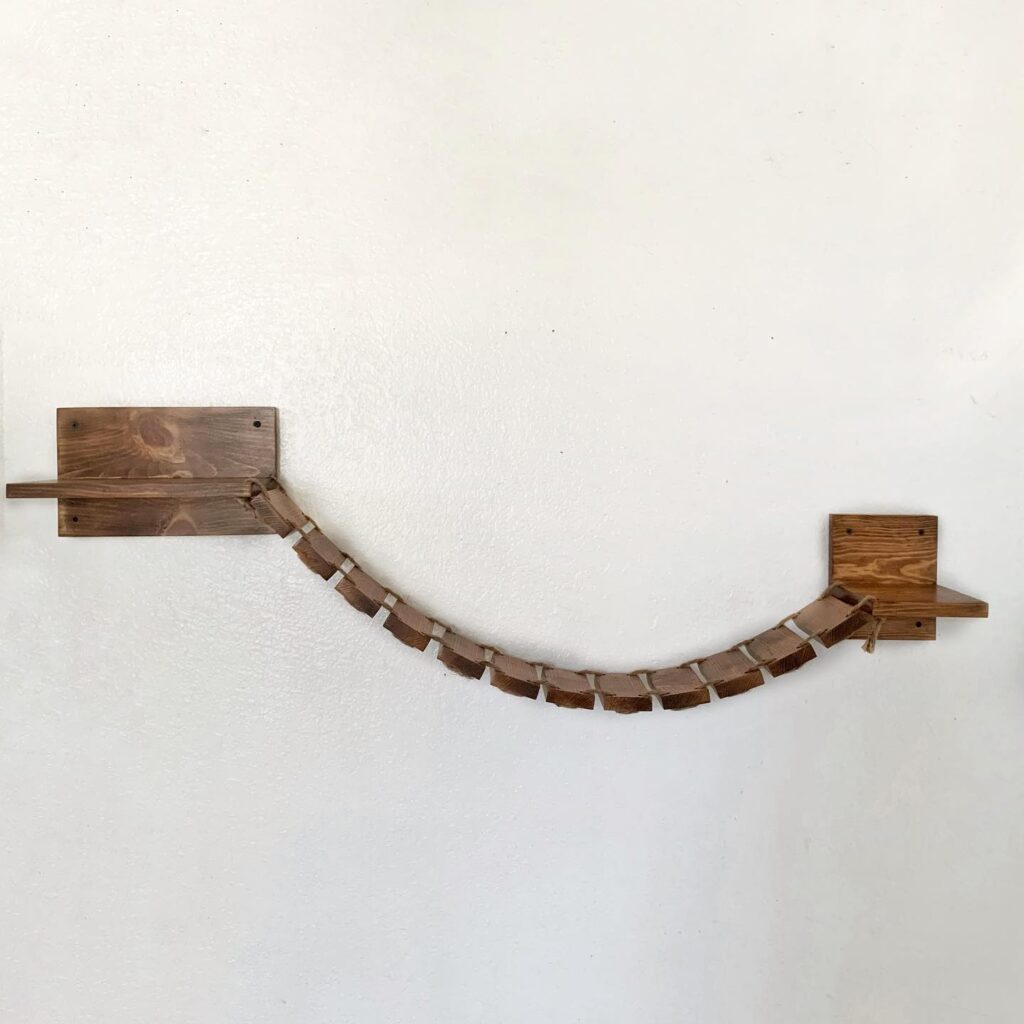
Unpainted wood, black brackets, and clean lines. Great for Scandinavian or modern interiors.
Rustic

Reclaimed wood, visible knots, rope elements. Perfect for farmhouse or natural décor themes.
Industrial
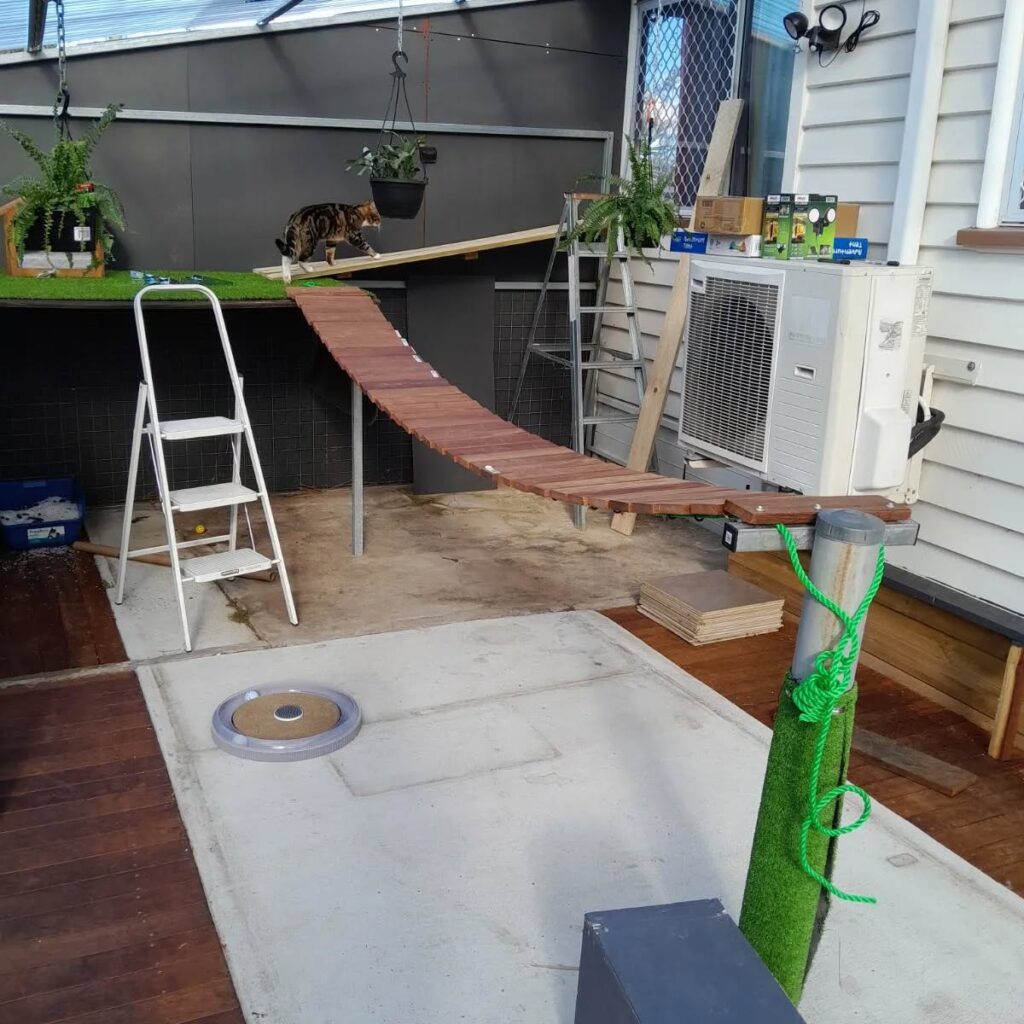
Metal frames, exposed bolts, and geometric forms. Suits lofts or converted spaces.
Boho
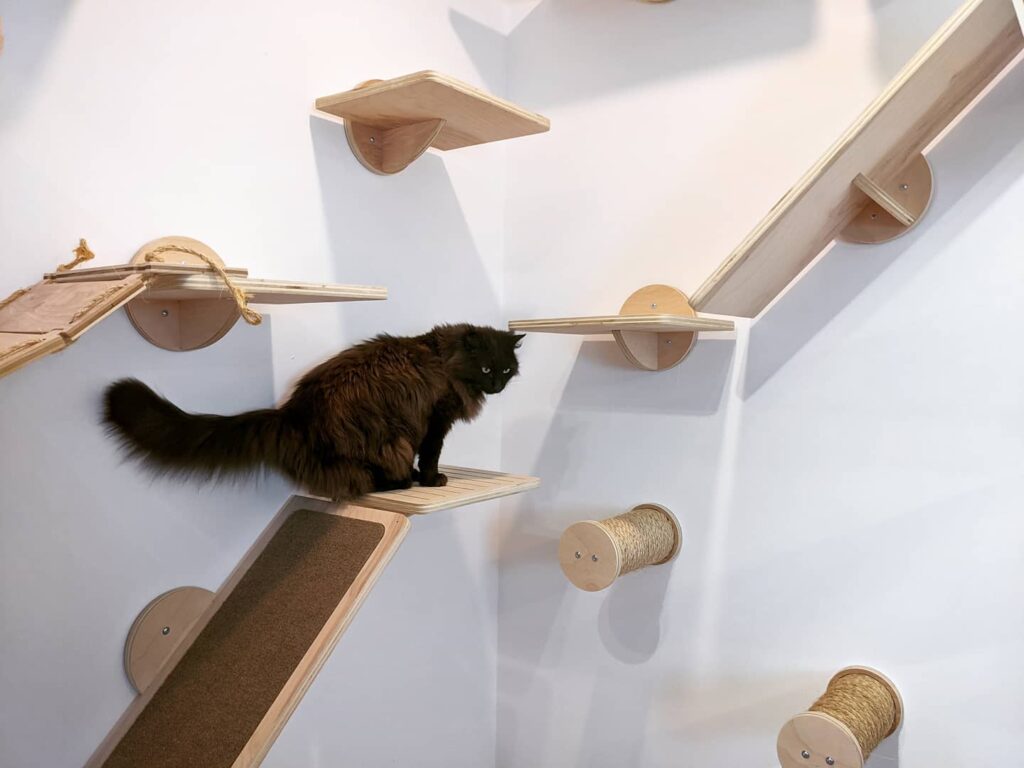
Add macramé handrails, tassels, or woven textures. Combine with plants and warm tones.
More Ideas:

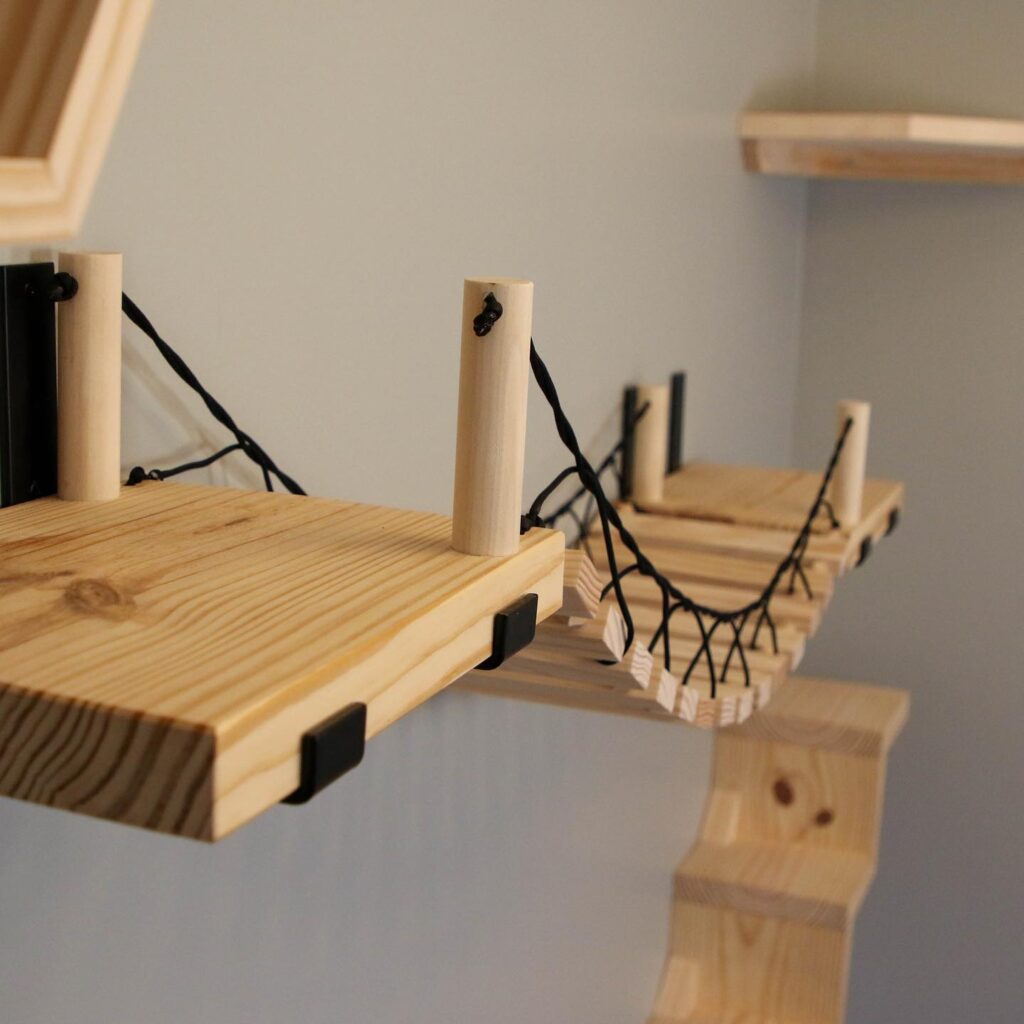
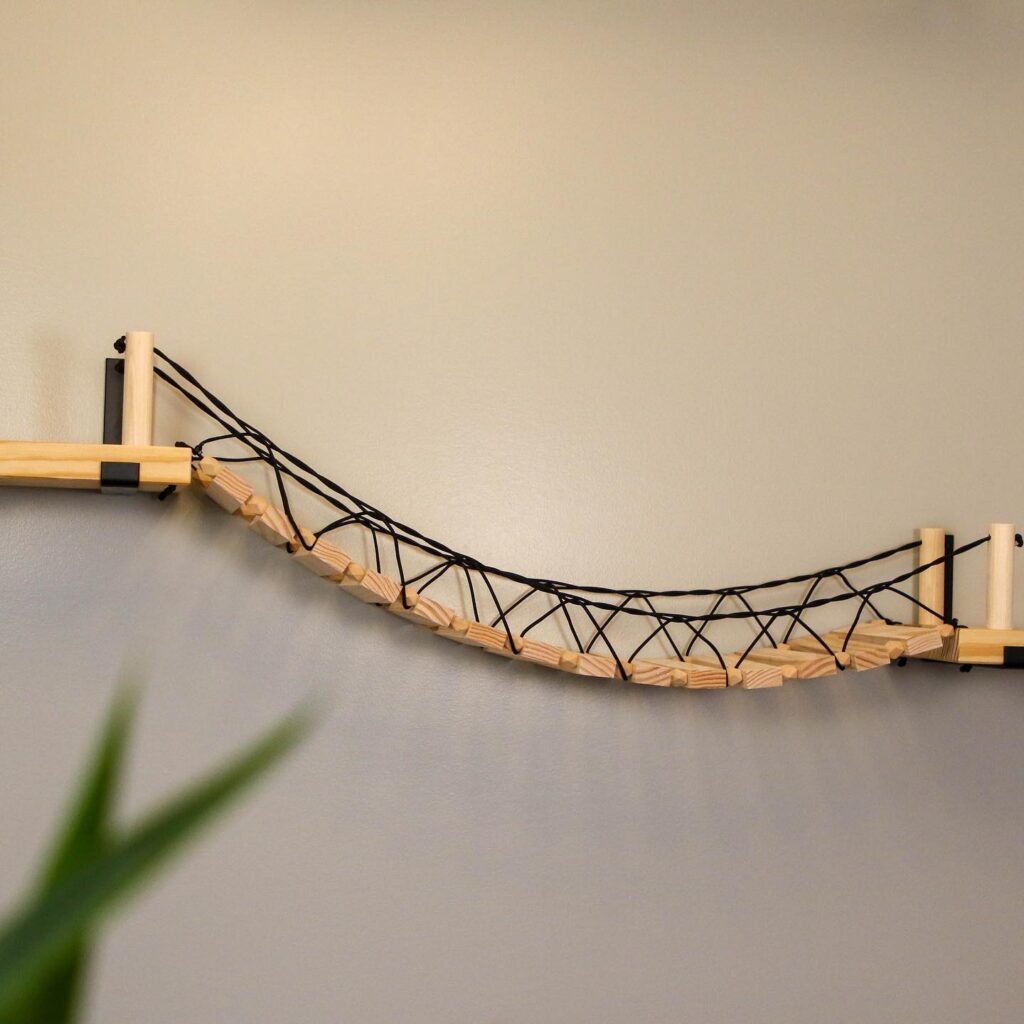
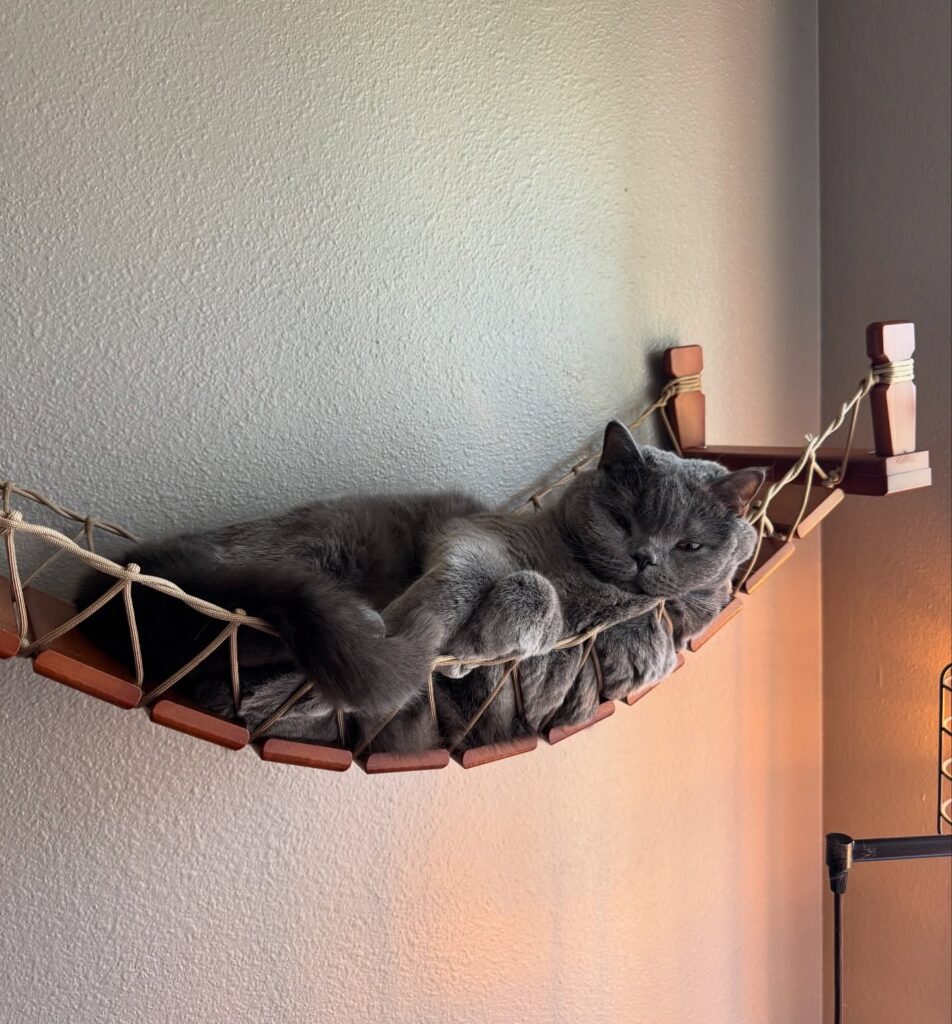
Final Thoughts
Cat bridges are a smart investment in your pet’s physical and mental well-being. They offer a sense of territory, reduce stress, and keep your cat active—all while adding visual intrigue to your space. Whether you go for a DIY bridge crafted from reclaimed wood or a modern ceiling-hung system, the possibilities are as broad as your creativity allows.
With 20+ ideas in this guide, you’ll have plenty of inspiration to match your home, budget, and your cat’s personality. Pair this article with your curated photo collection to showcase how versatile, stylish, and enriching cat bridges can be.


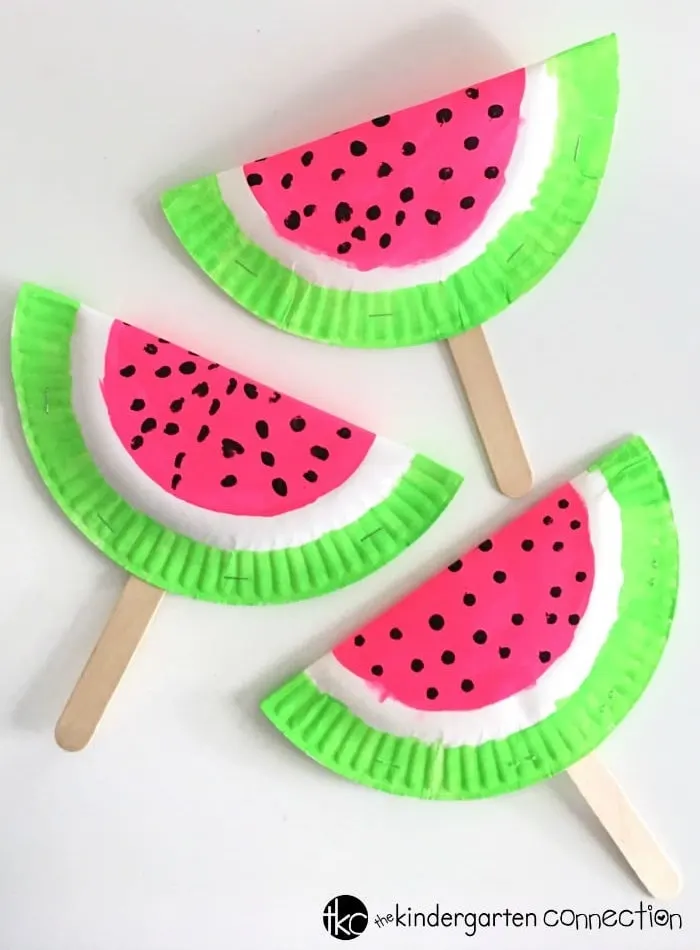
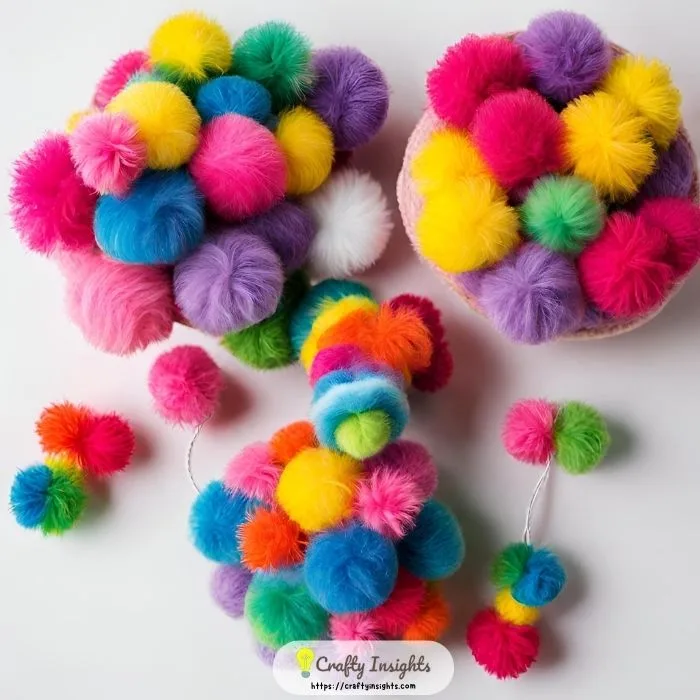
Leave a Reply